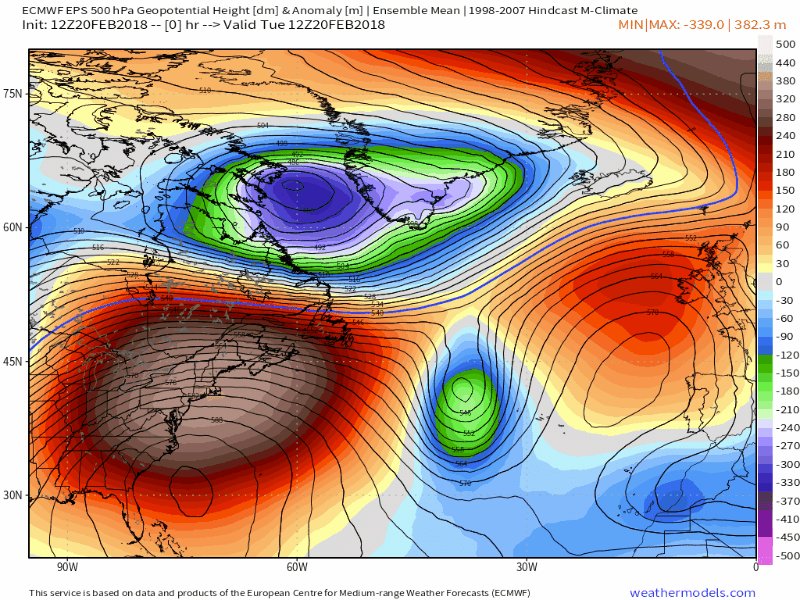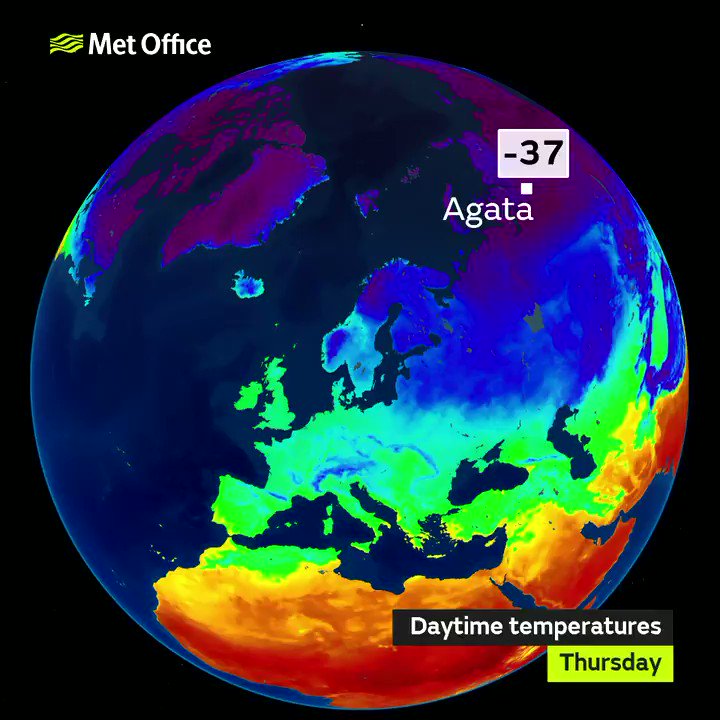Europe’s Record-setting Cold Weather Just Switched Directions and Is Heading for the U.S.
Weather Patterns from NOAA
CAILEY RIZZO
As much of the country enjoys a warmer-than-usual end to February, a storm is brewing in Europe that will change the course of weather patterns on this side of the Atlantic.
Eric Fisher
✔
@ericfisher
Next week, weather goes in reverse! The flow turns east to west...sending Europe's weather toward the U.S. Interesting times for weather watchers.
According to predictions from Weather.us, weather patterns will switch over the Atlantic next week, bringing Europe’s cold weather to the East Coast. As March begins, cities on the East Coast could experience snowstorms, Mashable reported.
The change in weather patterns was caused by “sudden stratospheric warming” earlier this week.
Sudden stratospheric warming disturbs and weakens the jet stream, allowing powerful weather patterns to switch directions. This week, western Europe is being punched with record-setting arctic winds, brought in from eastern Europe and Siberia. Meteorologists in the U.K. have called the sensation the “beast from the east.” That weather pattern is likely to continue into the United States as March begins.
James Warner
@MetmanJames
The predicted #SSW to occur and the timing of this (mid-late Feb) suggests the PV may not recover from this; climatologically, as solar strength becomes stronger the stratosphere will begin to warm (through ozone interactions).
“There is a very big, very cold pool of air that circulates around the north pole – sudden stratospheric warming, as it says on the tin, is when the stratosphere suddenly warms,” a spokesperson for the Met Office in the U.K. told The Guardian.
@metoffice
Easterly winds from Siberia will bring increasingly #cold conditions to northern Europe later this week and during the weekend. Nicknamed the ‘beast from the east’, the coldest air will arrive in the UK by the start of next week http://bit.ly/2BCJjVQ
The last time the phenomenon affected the U.K. was in 2013. This time, it is likely to affect weather around the world over the next four to six weeks, according to the Weather Network.



No comments:
Post a Comment